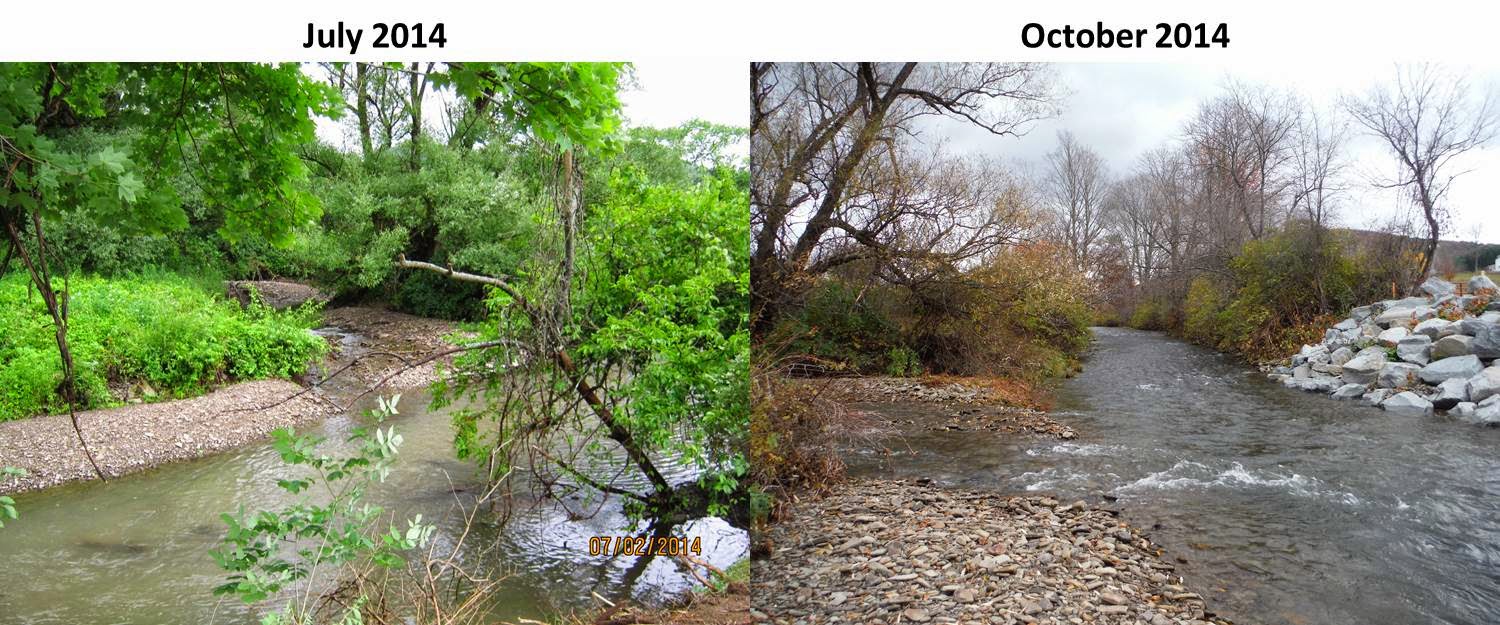This was my last trip to the Genesee River this season. I will return (as General MacArthur said) but not until the spring of next year. Water temperatures will be too low for me to get my little guys to emerge from the sediment, and the falling leaves make seeing them increasingly difficult. Also fall is generally a rainy time in the Northeast (though we have not had any yet) and water levels will start to rise very quickly once the rain does arrive. Finally, I am sure on sunlight. I finished with ~15 minutes left, and the days are only getting shorter. In very short order I will not be able to do a single site in a day. Hopefully next spring some of the animals I tagged will still be in the stream, although I suspect that many of them will have washed away down river by then.
One of my lampreys getting weighed and showing off all its tags. It was just about ready to be dropped into a bucket to recover.
The fall is certainly here. Willow leaves starting to build up. As the trees drop their leaves they release the nutrients stored in those leaves in the water. They also allow much more sunlight to get into the stream and algae growth booms this time of year. The rocks were well covered and very slippery.
The tree which those leaves probably came from further upstream. Only a month ago everything was bright green and growing well.
A tree that marks the site of one of the pools I sample. It has already lost almost all of its leaves. The pretty pink string marks my study site.
The same tree slightly further away. The "pool" I collect from here is really just the margin of the stream where some sediment has built up. Actually the animals I catch under here don't really move even though there are no barriers that would prevent them from doing so.

One of my smallest lampreys. I continue to catch this animal (and have since August) at the same pool. It has grown just 3 mm in 3 months. If you grew as slowly as it you would need millennia to get to adult size. Even for lampreys this is really slow. Other animals its same age are about twice as long and more than twice as heavy. This animal is probably not sick or having a problem, it probably just cannot get much to eat and has to grow very slowly. At the rate it is going it will be an adult in about a decade. It will probably get washed downriver this fall and if it does it may find growing conditions better in its new home. Obviously catching such a small fish over and over suggest that mortality is fairly low once they find a place to burrow.

One of the pools where I catch many of my study animals. There are quite literally hundreds of lampreys in this pool. I have not yet seen one other fish in the pool, which is also pretty cool. The pool is now coated in algae so catching them is a little challenging. It will be easier again once I return in the spring.
More plants marking the edge of another one of the areas I sample.
Many of the trees have lost their leaves already, but some are still losing them.


















